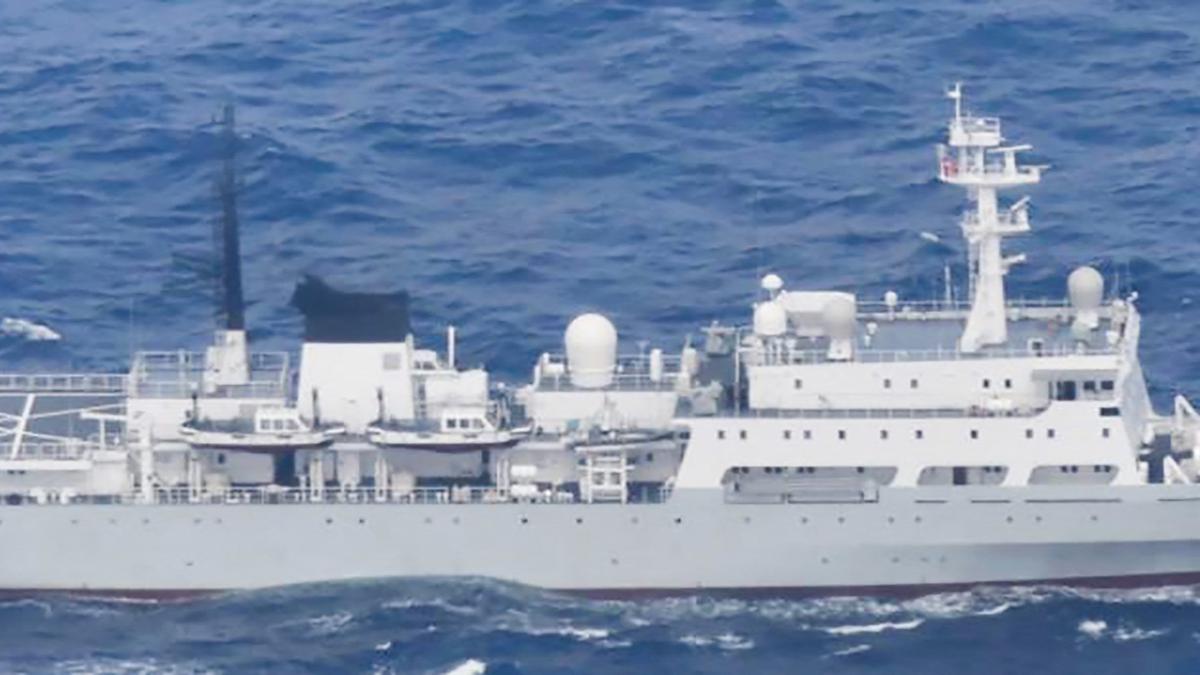Japan has voiced “strong concern and protest” over a recent incident involving a Chinese naval ship that entered its territorial waters near the southern Kuchinoerabu island. This follows a similar incident earlier in the week, where a Chinese military aircraft was accused of violating Japanese airspace. This heightened tension underscores the growing strategic rivalry between the two Asian giants and the potential for escalation in the East China Sea.
Territorial Waters Intrusion and Escalating Tensions
The Chinese naval vessel’s incursion near Kuchinoerabu island occurred early Saturday morning, with the ship entering Japanese territorial waters around 6:00 a.m. and exiting southwest of Yakushima island almost two hours later. This incident follows an earlier incursion by a Chinese Y-9 surveillance aircraft into Japanese airspace near the Danjo Islands in the East China Sea. Japan scrambled fighter jets in response to this incident, which Tokyo described as a “serious violation” of its sovereignty.
Japan’s Response and China’s Assertion
Following the naval ship’s incursion, Japan’s Foreign Ministry issued a strong protest to China’s embassy in Tokyo. The Ministry highlighted the growing pattern of Chinese military activities around Japan, citing this recent incursion as part of a concerning trend. While Beijing has not yet officially acknowledged these incidents, its assertive posture in the region, exemplified by its territorial claims in the South China Sea, further fuels anxieties in Tokyo.
Strategic Rivalry and Regional Security Concerns
The escalating tension between China and Japan reflects the broader geopolitical shifts in the Asia-Pacific region. China’s growing economic and military clout, coupled with its increasingly assertive territorial claims, have prompted regional anxieties, with the U.S. and its allies, including Japan, taking notice. This rivalry extends beyond the East China Sea, encompassing the South China Sea and other contested waters in the region.
The Impact of Japan’s Defense Buildup
Amid this heightened rivalry, Japan has embarked on a substantial defense modernization program. The Defense Ministry recently sought a record 8.5 trillion yen ($59 billion) for the next fiscal year, representing the largest initial budget request in its history. This funding is part of the country’s five-year, 43 trillion yen defense buildup plan, which runs through March 2028.
The budget request reflects a significant commitment towards developing “standoff capabilities” to strike distant targets with missiles and unmanned vehicles. This move underlines Japan’s determination to enhance its military capacity and counter any perceived threat from China.
Implications for Regional Stability
The tensions between China and Japan have significant implications for regional stability. The potential for military escalation, even unintentional, remains a pressing concern. Increased defense spending by Japan and other regional players could lead to a regional arms race, exacerbating security anxieties.
Diplomacy and De-escalation Efforts
Efforts towards de-escalation and dialogue are crucial. Open communication channels and a willingness to address each other’s concerns can help manage the existing tensions. This includes addressing specific disputes, such as the maritime boundaries in the East China Sea, through diplomacy and peaceful negotiations.
Takeaway Points
- The recent incidents involving Chinese naval and air forces near Japan highlight the growing strategic rivalry between the two countries.
- China’s assertive posture and territorial claims in the region have triggered concerns in Japan and other regional powers.
- Japan’s record defense budget request reflects its determination to strengthen its military capabilities.
- Regional stability requires increased dialogue and cooperation between China and Japan to avoid further escalation.
- Addressing specific disputes through peaceful negotiations remains crucial in fostering a more stable security environment in the Asia-Pacific region.









